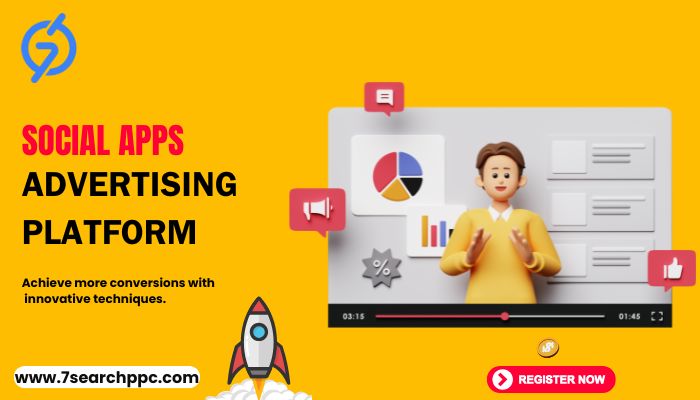In today’s digital landscape, social apps advertising has emerged as a vital strategy for brands seeking to connect with their audiences. With the increasing reliance on mobile devices and social media platforms, companies are recognizing the value of advertising within these environments. This article delves into the trends shaping social apps advertising, best practices for effective campaigns, and how businesses can leverage various advertising formats to achieve their marketing objectives.
Understanding Social Apps Advertising
What is Social Apps Advertising?
Social apps advertising refers to the promotional activities undertaken by brands on social media applications. It encompasses various advertising formats, including native ads, banner ads, and video ads, aimed at engaging users within their preferred platforms. The goal is to reach potential customers where they spend most of their time on social apps while delivering compelling content that resonates with them.
Why is Social Apps Advertising Important?
The significance of social apps advertising lies in its ability to harness the vast user base of social media platforms. Here are several reasons why brands prioritize this form of advertising:
- Widespread Reach: Social media platforms have billions of active users globally, providing brands with extensive opportunities to connect with diverse audiences.
- Targeted Marketing: Advertisers can utilize detailed targeting options based on demographics, interests, and behaviors, ensuring that ads are shown to the right users.
- High Engagement Rates: Users are more likely to interact with ads that appear within their social feeds, leading to higher engagement rates compared to traditional advertising methods.
Current Trends in Social Apps Advertising
Increased Investment in Mobile Advertising
As mobile usage continues to dominate, brands are allocating more of their budgets to mobile advertising. In 2023, mobile ad spending is expected to reach over $400 billion, with a significant portion dedicated to social media. Advertisers recognize that mobile platforms are essential for reaching users effectively.
The Dominance of Video Content
Video content is becoming increasingly popular in social apps advertising. Short-form videos, particularly on platforms like TikTok and Instagram Reels, are driving engagement and capturing users’ attention. Video ads typically yield higher interaction rates compared to static ads, making them an essential component of advertising strategies.
The Shift to Native Advertising
Native ads are designed to blend seamlessly with the content on social media platforms, making them less intrusive and more appealing to users. As consumers become adept at ignoring traditional banner ads, brands are shifting toward native advertising, which provides a more organic experience and fosters higher engagement.
Authenticity and User-Generated Content
Consumers are gravitating towards brands that prioritize authenticity and transparency. User-generated content (UGC) has gained traction as a powerful tool in social apps advertising. Brands encourage users to share their experiences with products, creating relatable and authentic campaigns that resonate with audiences.
Data-Driven Decision Making
With advanced analytics and tracking tools, brands can leverage data to inform their social apps advertising strategies. By analyzing user behavior, engagement metrics, and conversion rates, advertisers can refine their campaigns and allocate budgets more effectively, enhancing their return on investment.
Best Practices for Social Apps Advertising
Define Your Target Audience
Before launching any advertising campaign, it’s crucial to define your target audience. Understanding who your ideal customers are, their interests, demographics, and online behaviors will enable you to create tailored messaging that resonates with them. Utilizing the targeting capabilities of social ad networks can significantly enhance the effectiveness of your campaigns.
Use Multiple Ad Formats
Experimenting with various ad formats is key to maximizing your advertising efforts. While banner ads can provide visibility, incorporating native ads and video content can enhance engagement. A diverse mix of ad formats keeps your audience interested and helps you determine which formats work best for your brand.
The Role of Native Ads
Native ads are designed to match the look and feel of the platform where they appear. This format allows brands to deliver their messages in a non-disruptive manner, leading to better engagement and higher conversion rates. For instance, sponsored posts on Instagram that blend with regular content can attract more interactions compared to traditional ads.
Utilizing Video Ads
Video ads, especially those that are short and engaging, have proven to be highly effective. Platforms like TikTok and Instagram prioritize video content, allowing brands to create visually appealing ads that capture users’ attention quickly. Brands can use storytelling techniques, humor, or emotional appeals in their videos to foster deeper connections with viewers.
Optimize for Mobile Experience
As social apps are primarily accessed via mobile devices, ensuring that your ads are optimized for mobile viewing is crucial. This includes using mobile-friendly formats, ensuring fast loading times, and crafting compelling copy that is easy to read on smaller screens. A seamless mobile experience enhances user engagement and increases the likelihood of conversions.
Create Engaging Content
The quality of content plays a significant role in the success of social apps advertising. Craft engaging, visually appealing ads that capture attention within the first few seconds. Use high-quality images and videos, and incorporate storytelling elements to make your content relatable and memorable.
Leverage Social Proof and UGC
Incorporating social proof—such as testimonials or user reviews—can significantly enhance the credibility of your ads. Highlighting UGC, where satisfied customers share their experiences with your products, fosters authenticity and relatability. Encouraging your audience to share their content related to your brand and using it in your advertising can create a sense of community.
Monitor and Analyze Performance
Regularly monitoring the performance of your advertising campaigns is essential for identifying what works and what doesn’t. Utilize analytics tools to track engagement, clicks, conversions, and other relevant metrics. Use this data to refine your campaigns, optimizing for better CPM (cost-per-thousand impressions) and PPC (pay-per-click) performance.
Conduct A/B Testing
A/B testing involves comparing two versions of an ad to determine which one performs better. Test different headlines, visuals, calls to action, and ad placements to identify what resonates most with your audience. This iterative process allows you to continuously improve your campaigns and maximize ROI.
Set Clear Goals
Establishing clear and measurable goals before launching your advertising campaigns is vital. Whether your objective is to increase brand awareness, drive traffic to your website, or boost sales, having specific goals will guide your campaign strategy and allow you to assess success effectively.
Invest in Retargeting Campaigns
Retargeting campaigns can significantly enhance your advertising effectiveness by reaching users who have previously engaged with your brand. By showing tailored ads to users who have visited your site or interacted with your content, you can remind them of your offerings and encourage conversions.
Stay Updated on Industry Trends
The landscape of social apps advertising is constantly evolving. Staying informed about the latest trends, platform updates, and user behaviors is essential for maintaining a competitive edge. Adapt your strategies to changes in the digital marketing landscape to ensure your brand remains relevant and effective.
Conclusion
The rise of social apps advertising marks a significant shift in how brands connect with their audiences. As mobile usage continues to grow, and social media platforms evolve, businesses must adapt their advertising strategies to remain competitive. By understanding current trends and implementing best practices, brands can effectively leverage social apps advertising to achieve their marketing goals. Embracing innovative ad formats, prioritizing authenticity, and utilizing data-driven insights will ensure success in this dynamic advertising landscape. As the digital marketing landscape evolves, staying informed and agile will be key to unlocking the full potential of social apps advertising.
FAQs
What is Social Apps Advertising?
Ans. Social apps advertising refers to the promotional efforts brands undertake on social media applications to reach and engage their target audiences. It encompasses various ad formats such as native ads, banner ads, and video ads.
How does Social Apps Advertising differ from traditional advertising?
Ans.Unlike traditional advertising, which often interrupts the user experience, social apps advertising is designed to integrate seamlessly into users’ feeds. It focuses on engagement and interaction, leveraging the social nature of these platforms.
What are the benefits of using a social ad network?
Ans.Using a social ad network allows advertisers to access a wide range of social media platforms from a single interface. It simplifies the advertising process, enabling efficient ad placement, targeting, and performance tracking.
What is the role of PPC in social apps advertising?
Ans.PPC (pay-per-click) is a pricing model used in social apps advertising where advertisers pay for each click on their ads. This model allows brands to control their advertising costs and only pay when users engage with their content.
How can I measure the success of my social apps advertising campaigns?
Ans. Success can be measured through various metrics, including engagement rates, click-through rates (CTR), conversion rates, and return on ad spend (ROAS). Utilizing analytics tools can help track these metrics effectively.



